Updated: 11 Nov 2020
|
The
Spitfire - Page 2 What the well dressed 42/43 Spitfire Pilot would be wearing in the air! Dunkirk - the truth - New Evidence The sort of equipment a Spitfire pilot would be wearing circa 42/43 would be Battle dress, 41 pattern Mae West, 36, 39, Nuffield or 43 pattern boots (fighter pilots didn`t tend to wear the 40 or 41 pattern boots as a rule), C type helmet (externally wired), Mk VII goggles, E* or G type oxygen mask, 41 pattern gloves and a pilot type parachute harness. Obviously this equipment depends on how early in 1942 and how late in 1943. Also equipment from earlier in the war continued to be used if preferred by the wearer (for example pictures of pilots wearing early B type helmets late in the war are quite often seen). Oxygen equipment tended to be upgraded quickly for obvious reasons. Photographs of Rob Chambers - Sept 2010
The Great Escape Email from John Vanderstock - June 2011. One of my cousins was Bram (Bob) van der Stok who was a spitfire pilot with the 322 Squadron. He was shot down and ended up in Stalag Luft 111 and was one of only three prisoners to escape back to England during the "Great Escape" I was fortunate to met Bob in Hawaii in the early 1980's where he was a doctor in a retarded childrenís hospital. Unfortunately he did not speak well of the "Great Escape" film, explaining that the film makers changed all of the escapees names and the roles they played. Bob was one of the last out of the tunnel as he did not help in the dig, but was employed to forge documents. I lost contact with him some time ago but believe he died only a few years ago. The saddest thing he told me was that after the escape he made his way through to Holland to let his parents know he was OK but unfortunately the Germans had tortured his parents and killed them presuming that he had already contacted them and knew where he was. My other brush with Spitfires was to personally meet Douglas Bader the legless Spitfire pilot. Douglas was by boyhood hero. I had spent two years of my childhood in a hospital for a leg complaint and on my release came out with a Steel Caliper on my leg which was only removed sometime around my 10th birthday. It was around this time I saw "Reach for the Sky" and after the trials and tribulations of Douglas, I determined there and then, if he could do THAT, I had nothing to complain about! In the late 1970's or early 80's, I was employed in the customs hall at Melbourne Airport and who should I see pass through customs was Douglas Bader. On reaching the passenger arrivals area he was met by a few newspaper reporters and I went up and introduced myself. After explaining to him how he had inspired me, he said; "Well, go on then" and I asked what he meant. "Walk up and down" he said, "Lets see what they have done for you " And so i did, and after returning to him he said he knew my doctor and that they had "done a good job". An email from David Dunn in August 2011 tells me: I have read your article regarding the buried Spitfire parts near Castle Bromwich Factory. About 18 months ago I dowsed the area and found the location of 25 trenches where I believe 840 Griffon engines are buried. I went to the site with my Discovery TF 900 deep search metal detector, and found the first trench. within seconds my detector told me that a large metal object was under my feet . This measured 4.5 feet long by 2.5 feet wide. As I walked on, I found another one then another. An old man came along and asked what I was doing.. I said I was showing my son my new detector from the USA and how it worked. He told me in the field opposite two horses had died due to eating the grass there.. This is where I believe the nasty's are buried from the Spit. Factory. (phosphor paint, and chemicals). These engines are not too deep I would say 3-8 feet max. I was also told that this area belongs to Sandford CC and not Birmingham! Whoever owns this land KNOWS that the Environmental Health Act of 2002 states that who ever owns the land is responsible for the buried waste under the earth!! Even though its M.O.D. they have to clean it up at their cost which will be thousands of pounds. So what do you do as a council?? You call it a Nature Reserve!! The grass kills animals but hey thatís ok! You probably know that the RAF many years ago tried to find these engines for spares for the Shakelton Aircraft. It was rumoured that that BCC gave them permission to dig on the football fields near to the old Spit Factory... They found nothing.. You will also know that many of these engines were made at Brown hills. ( I found the old factory here too). Old Spit RR rocker covers found buried in the car park 15 years ago. Ok These engines are there I know it... How you get them out is another problem? Geofizz has the kit to scan the ground and see what is there before a JCB is called in.. One idea was to buy the land and recover at my leisure. The councils have NO money... Maybe a deal can be done.... recover the engines and keep some, and sell the rest via RAF Cosford auction house... The council then gets some dosh. Also who does these engines now belong too?? The landowner or the RAF/ MOD? What about a Spit Seaplane only 6 prototypes... I know where the last one is..... I have been down to Southampton museum and they want to display it. The Schneider Aircraft engine is rotting away on the Isle of Wight with other IMPORTANT engines that belong to a/c in that museum. These were bought or taken by Campbell (Blue Bird Fame) Two large sheds.. full of engines and left as they were in 1967. His family are not interested in this history.. what a bloody pity and a shame. The roofs are leaking over aero engines both piston and early jets. Can Anyone Help?
This is a Spitfire of the USAF. The pilot is a Canadian called Felton. He transfered to the USAF from the RCAF. His son Jack is looking for info on the Spit. At present we do not have the tail number. I realise that info chances are slim without this but you never know! This image was apparently taken in Italy. Spitfire VC Factsheet Following the Battle of
Britain in 1940, the Royal Air Force had planned to replace its Spitfire Mk. I
and II fighters with the Mk. III, which had been under development for two
years. The Mk. III included significant improvements such as an improved wing
design, a retractable tail wheel and a new Rolls-Royce Merlin XX engine. http://www.nationalmuseum.af.mil/factsheets/factsheet.asp?id=489 We must not lose the information so painstakingly placed in the web, share it or its lost forever. The information I have gathered on this page has come from many different sources, mostly via email and volunteered to me for use. Inevitably there will be parts where this information may well have come from other sites, possibly even some of those named above. Such is the nature of the beast. I offer my info freely and only ask that an acknowledgement is used. Ignorance is only lack of knowledge, lets not get too ignorant about our glorious history. The following images were sent to me for inclusion on this page by an unknown photographer. I understand these were taken at West Malling, but date unknown.
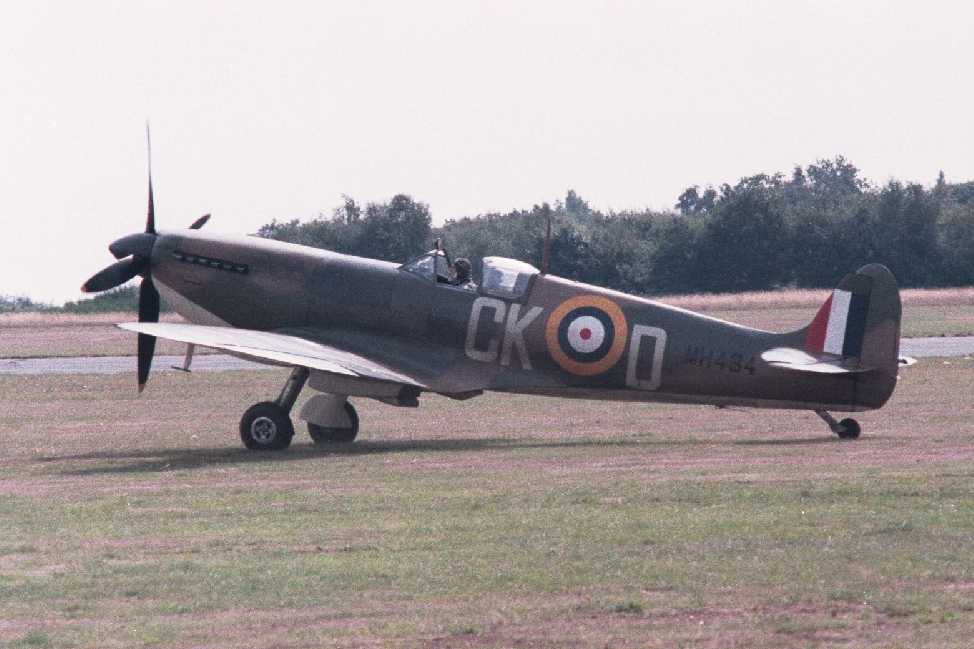
http://news.sky.com/story/1473091/spitfire-buried-on-beach-up-for-auction
A Royal Air Force Spitfire that spent 40 years buried on a French beach before being returned to flying condition is being sold at auction. The Spitfire Mk.1A, known as P9374, was being piloted by Flying Officer Peter Cazenove on 24 May 1940, who attacked some German Dornier Do 17 bombers while on patrol between Calais and Dunkirk during the Battle of France. The aircraft is believed to have taken hits from one of the Luftwaffe gunners, probably disabling the Merlin engine, and Mr Cazenove was forced to land the plane on a beach near Calais. The Spitfire, after initially being photographed by triumphant German soldiers, was covered up by the shifting sands. Forty years later, those same shifting sands exposed the aircraft again, and it was recovered. What disabled the spitfire was one solitary bullet which penetrated a pipe on the engline, causing it to overheat and fail.
In October 2000 it was purchased from a French aircraft enthusiast and taken back to Britain, where the Aircraft Restoration Company at the Imperial War Museum Duxford began the long process to get it back in the air. It was restored to its original condition and took its first flight on 30 August 2011. P9374, which left the factory on 2 March 1940, is the earliest Spitfire flying anywhere in the world. The Imperial War Museum said: "One of the most instantly recognisable silhouettes in the air, the Spitfire is not just a thing of beauty, but a phenomenal aircraft that helped to save Britain in 1940 and contribute significantly to winning the Second World War in the air." The aircraft will be flying in the VE Day Anniversary Air Show at Duxford in Cambridgeshire on 23 and 24 May 2015. It is then being sold by auction house Christie's on 9 July to benefit the RAF Benevolent Fund and wildlife charity Panthera. http://www.markonepartners.co.uk/spitfire-i Dunkirk, New Evidence. The release of RAF files of May 1940 sheds a whole new light on the bad name the squaddies gave the RAF, claiming they were not there. What they didn't know is that 900 planes were lost inside France, trying to stop german aircraft from reaching the beaches. What turned the tide - the Spitfire? First time into combat and the germans couldn't handle the ferocious, quick turning, fighter. Hundreds of German aircraft were shot down by the Spitfires. And the poor squaddie blamed the RAF for their plight.? None of the 350,000 saved would have made it if the Spit had not been fighting behind the lines. I hope history will now be rewritten. In one sortie, 12 Spitifies successfully stopped 50 german aircraft from reaching the beaches. Geoffrey Stephensons Spitfire N3200 suffered the same fate as Casenoves Spitfire. This was lifted from the sands at near Calais and restored. The aircraft is flying again and was filmed over Dunkirk for a documentary in 2017. In some items online it sesems to get confused with the other Spitfire mentioned above. P9374. One particular item was mentioned in the programme, regarding Geoffrey. After being shot down, he tried to get back to Enlgand and no less than THREE destroyers turned him away because he was in his flying suit - ONLY Army on this boat they told him now F**** Off. Thats not only a disgusting way to behave but totally illegal. Another airman was told by a tommy, ditch your uniform, put on these boots, black mac and tin helmet or you wont get home!! I hope the culprits found out how much the RAF contributed to the Miracle of Dunkirk, and I hope it made them sick! Intolerable. |
 Geoffrey Stephenson |
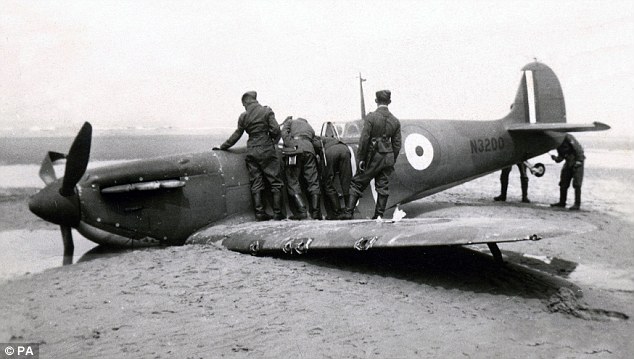 |
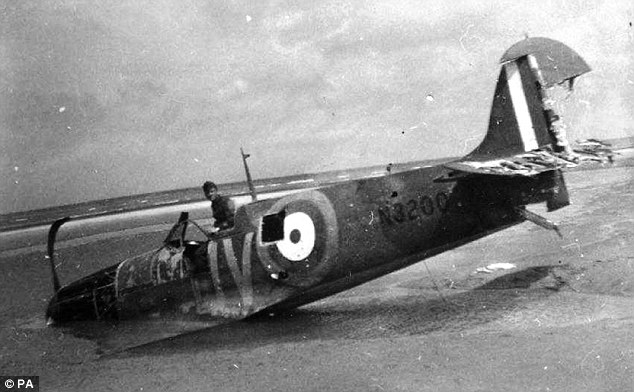 |
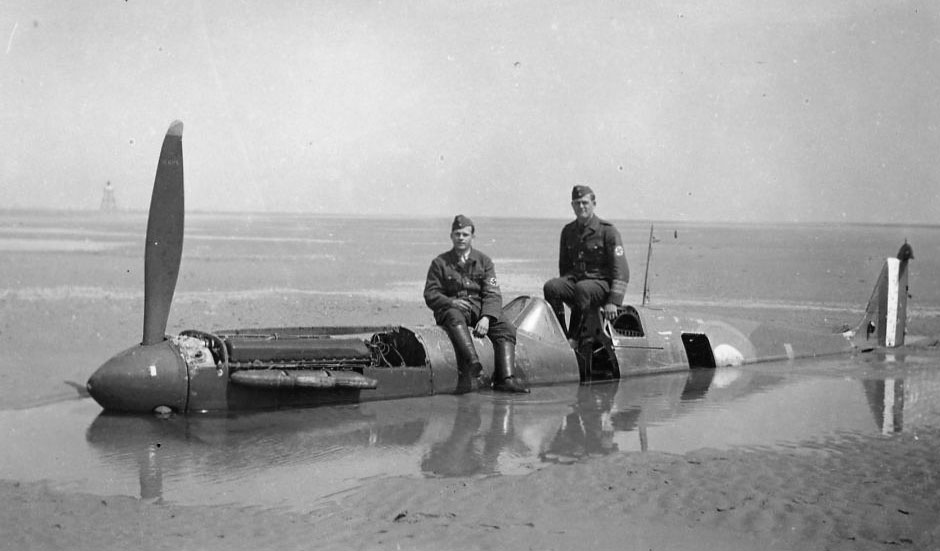 |
Update: N3200 flew again: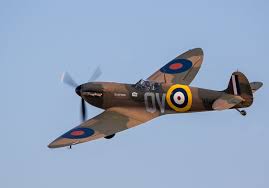 |
| http://www.iwm.org.uk/history/the-spitfire-lost-for-almost-50-years |
| http://www.warbirdregistry.org/spitregistry/spitfire-n3200.html |
| Spitfire For Sale - November 2020 |
.jpg) |
1945 SUPERMARINE SPITFIRE XVIES/N TE392 OFFERED AT £2,490,000 |
| More Details |
| At time of print based in Brisbane Australia. |
Acknowledgements
& Useful Sites:
(Over time some disappear, I just checked and
nearly 20 sites have I removed from the links below, no longer exist)
http://www.supermarine-spitfire.co.uk/spitfire.html
http://www.luftwaffe-experten.co.uk/supermarine.html
http://www.rafmuseumphotos.com/page.php?page=index
http://www.asrmcs-club.com/ - Air Sea Rescue
http://www.flyingmachines.